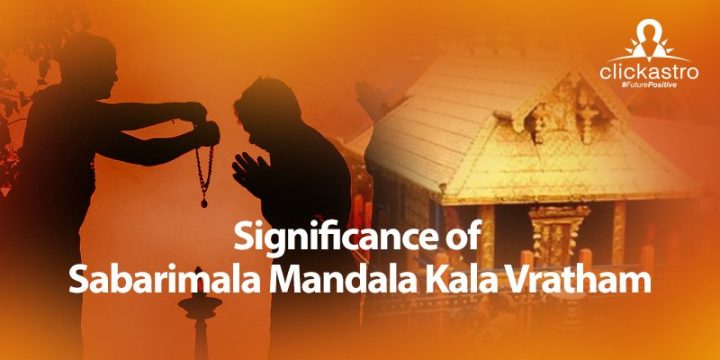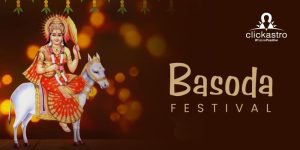Contents[hide]
Sabarimala Mandala Kalam 2024/25
The Lord Ayyappa temple at Sabarimala is an iconic temple located deep within the forest amid 18 hills at an altitude of 4133 feet above sea level. It is situated in the Pathanamthitta district of Kerala state. This is an ancient temple whose earliest mention goes back to Treta Yuga, during the time of Lord Ram.What is Mandala Kalam – Makaravilakku Season?
The Sannidhanam or the main temple is built on a 40-foot high plateau. The shrine was rebuilt in 1950 after a fire gutted the premises and the stone image of the deity was replaced by a Panchaloha idol made from an alloy of five metals. The temple opens for the first five days of every Malayalam month. During the Mandalakala season, the temple will remain open for 41 days, starting from the first of Vrischikam month, till the eleventh day of Dhanu month. Then the temple will be shut for four days, after which it will open for the 21-day Makaravilakku season. The culmination of the season happens during the Makara Sankranti when the Sun transits to the Makara constellation and enters Uttarayana or the north of the celestial sphere. Sun in Uttarayana is generally considered the beginning of an auspicious time. Makara Jyothi is the star that appears in the sky during this time. Get your FREE horoscope now!When is Mandala Kalam 2024/25?
Makaravilakku is a light or flame that appears thrice on the Ponnambalamedu hill, four km away from the temple to mark the occasion. The 2024 Mandalakala season begins on November 16, Saturday and ends on December 26, Thursday. The Makaravilakku season starts on 30th December, Monday and ends on 20th January 2024, Monday.The Makaravilakku season starts on 30th December, Monday and ends on 20th January 2024, Monday.
How to do the 41-day Mandalakala Vrutham?
Only after undertaking a rigorous vrutham for 41 days does a person become eligible for the darshan of Lord Ayyappa. The person has to be dressed in black or dark blue clothes and carry an irumudikettu to climb the 18 steps to reach the abode of the Lord. During the vritham or the fasting period, the person is to lead a pious life. He/She should subsist on the simplest and minimal food. The vritham is initiated by wearing a Mudra Mala. The person fasting should get up early, bathe in cold water twice a day, not cut hair or fingernails, and chant swami saranam before every conversation and at the end of it. He/She should also be wearing simple clothes either black or dark blue. The person should refrain from indulging in worldly pleasures during this period. He/She should not get angry and remain calm throughout. The idea is that to see god, one should transform oneself into a god. Once the Mudra mala is worn, the person starts the journey to become one with god. Before ascending the 18 holy steps of Sabarimala temple which gets you a darshan of god, you are told ‘tatwamasi’, meaning ‘it is you’. That is, the god you have come to see is within you. The 41-day fasting period transforms the devotee from human to god. It is customary to revere every devotee preparing for Sabarimala pilgrimage as an avatar of the Lord himself. To ascend the 18 holy steps leading to Lord Ayyappa, the person should have irumudikettu.What is Irumudikettu?
Irumudi is a cloth bundle with two compartments. It is carried on the head by the devotees and is of the colors of black or dark blue. The front portion contains the pooja articles and the sacred offerings to be made to the deity, like ghee-filled coconut, raw rice, jaggery or cane sugar, betel leaves, camphor, etc., while the personal belongings of the devotee are carried rear in the compartment. The ghee coconut is the most important. Known as Mudra Thenga, the outside of the coconut is cleaned thoroughly, and the inside is emptied by draining out the sweet water through the eye of the coconut. Then the coconut is filled with pure ghee, which is used later for the abhishekham of the Lord. The opening of the ghee coconut is then sealed. The ghee coconut represents the act of emptying oneself of worldly pleasures first and then filling the void with pure life force. Bathing the Lord with the ghee amounts to merging one’s consciousness with the divine. Get detailed predictions for the year 2025The 18 Holy Steps of Sabarimala Temple
Ascending the Pathinettaampadi, or the 18 steps, is the most important part of the Sabarimala pilgrimage. The devotees start the ascension to receive the Lord’s darshan by placing their right foot on the first step. The 18 steps are thought to signify the 18 hills which surround the Sabarimala temple. But, it is revered much more for its spiritual symbolism. The first five of these steps are considered to represent the five senses – vision, hearing, smell, taste, and touch. The next eight signifies the eight negative traits of human emotions such as desire, anger, greed, lust, pride, jealousy, envy, and boastfulness. The next three represent the three Gunas or qualities – sattva (clarity), rajas, (activity), and tamas (inertia); and the last two steps denote the twins of knowledge and ignorance. It is believed that only after climbing these steps and going beyond all that they represent, one can detach the self from all worldly bonding and attain a state where one can align with the supreme. For this, strict adherence to austerities during the 41+ day Mandalakalavritham period is essential.Significance of Mandalakala Vrutham
As per mythology, Lord Ayyappa devised the 41-day vritham to protect his devotees from the evils of Shani or Saturn. The extreme Dasha period of Shani lasts for seven years during which the person may lose his flair to keep his hair and nails trimmed, may have to suffer from cold weather, be forced into austerity, may lose property, and even resort to begging. An Ayyappa devotee can overcome these seven years and others by undergoing similar penance during the 41 days starting from Vrischikam. This is a period when the Sun is farthest at Daksinayana or south of the celestial sphere. This means the influence of the Sun is at a minimum. Since Shani is the opposite of the Sun, it means the influence of Shani is at its peak. Under Shani’s influence comes bitter weather, laziness, bad food, bad company, cruelty, and illnesses. Download your Personalized Saturn Transit Report For persons with Medam Rashi, Karkidakam Rashi, and Thulam Rashi this is the time of kandaka shani. For Medam Rashi persons there may be problems with employment. For Karkidakam Rashi personal problems may arise in the form of undesired and unpleasant travels. For Thulam Rashi persons, problems will come in the form of arthritis or from maternal relations. Persons with Midhunam Rashi are facing Ashtama Shani. They may encounter health problems. Those in Dhanu, Makaram, and Kumbam Rashis are going through sade saath and may face excess expenses, failure, and lack of results to efforts made. For persons in these Rashis, undergoing the 41-day vritham will bring excellent benefits. For those belonging to other Rashis too, observing the penance will help to mitigate the evil influence of Shani. The clothes worn during this period should be either black or dark blue as that’s the color agreeable to Shani. The vritham is observed for upwards of 41 days as it takes around 40 days of disciplined observance for a person to physically and psychologically accept the change that is being evoked within him or her.The Science of Mandala Kalam
Black clothes absorb heat and protect the body from the cold climate. Black clothes were also used to hold back animal attacks during the long trek through dense forests.Significance of Black Colour in Astrology
Devotees wear rudraksha, spatika, tulasi, sandalwood, coral, and lotus beads as jewelry around the neck at the time of vritham. Rudrakshas control anger and bring down the pressure. Tulasi chills the mind, sandalwood beads keep the body hydrated, spatika beads absorb toxins, coral beads make blood flow smooth while Lotus beads keep the skin fresh and healthy. The best time to wake up during the vritham period is 4 in the morning which is called ‘Bramhamuhurta’ where the brain cells can perform in higher magnitude and fill the body with new life force. The smoke from burning camphor will clear the sinuses. Devotees worship Lord Ayyapan twice a day by lighting a camphor. Coldwater baths make the body work harder to maintain heat. That and a steady diet leaving out spicy, hot, and salty tastes and eating only sattvic food, which is easily digestible, raises immunity power and improves mental stability. Walking barefoot acts as a treatment of acupuncture and controls blood pressure. Sleeping on the floor will relieve various ailments in the body due to the earth’s inherent life force.







